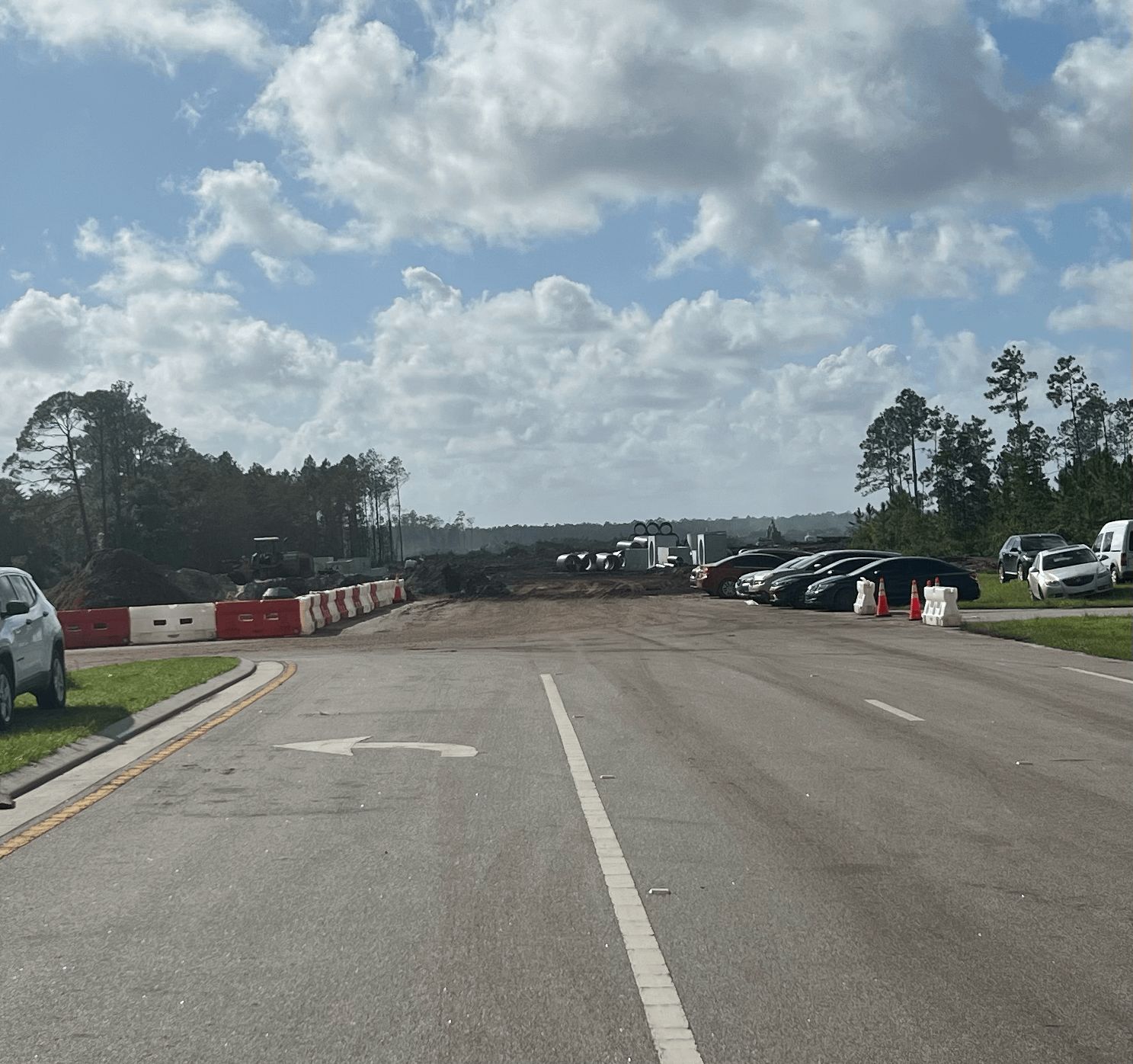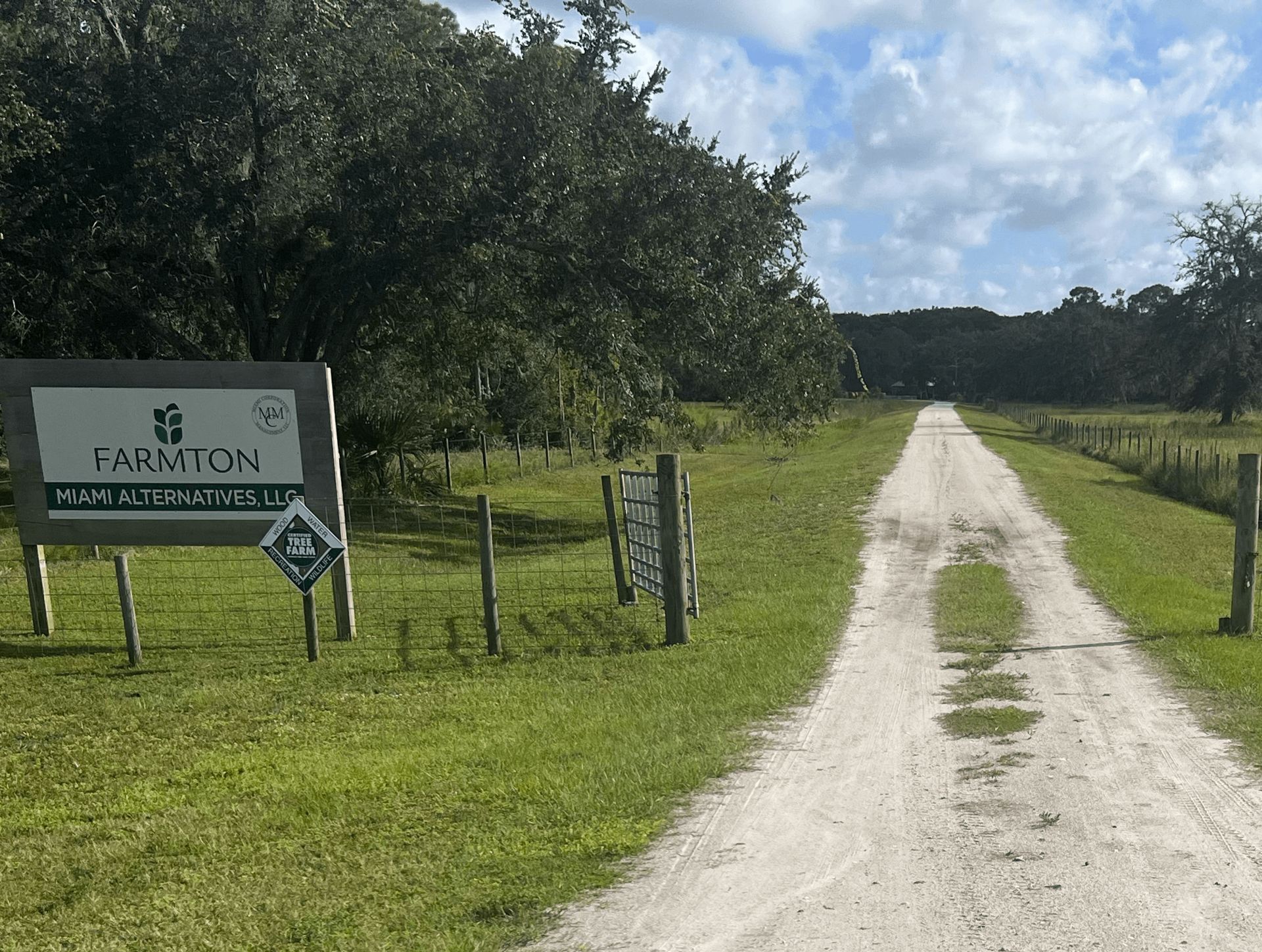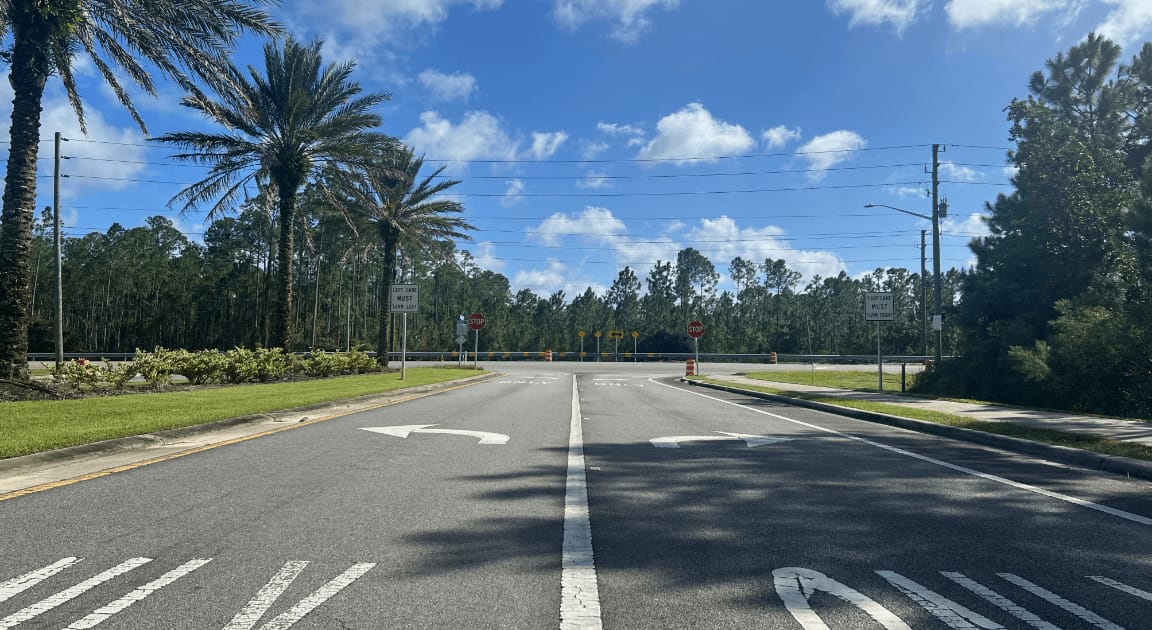The Essentials
Clearing and earth-moving are underway on west end of Edgewater
Start of work in New Smyrna Beach is at least two years away
Williamson Boulevard will be extended to connect with Deering Park
Opponents of NSB segment see limited options
The Story
A smokey haze from the exhaust of heavy equipment and burning wood hung over the muddy ground beyond the west end of State Road 442 in Edgewater on Wednesday. This is the start of Deering Park North and Deering Park Center, a planned mix of homes, shops, tech businesses, parks and pathways that will span several miles along the west side of Interstate 95 where pines were once grown for pulp. “Wood - Water - Recreation - Wildlife,” a sign for the Farmton Tree Farm still declares yards from where the clearing and early construction have begun.
If you’ve seen overhead shots on social media of forests being cleared and water features being carved, the work in Edgewater is what you are seeing. Development has yet to begin 5 miles to the north of 442 in the piney outskirts of New Smyrna Beach, where the Deering Park Innovation Center is slated to go. This 1,618-acre community of high-tech businesses, shops and residences will extend southward from State Road 44 along the west side of I-95 and eventually meet seamlessly with the Edgewater segments.
“It’s coming up here; it’s just not here yet,” says Bryon White, a native of NSB and founder of Slow the Growth, a community group that opposes the Deering Park project. A friend of White’s took videos from his aircraft, and those images have been circulating widely on Facebook since September.
Subscribe so Beat lands right in your inbox. It’s free and spam free.
Depending on your point of view, the haze and mud in Edgewater are either the start of a travesty that will exacerbate residential flooding and erase more of Florida’s dwindling green space, or they are small prices to pay to catalyze a bright future of well-paying technology jobs for the area’s youth. The developer’s agreement with NSB for its part of the project makes 20 references to job creation or production.

Clearing and early construction were underway at the west end of State Road 442 in Edgewater on Oct. 8, 2025. Photo: Ben Iannotta
From tree farm to business corridor
Once all three segments are done, the Deering Park development will run parallel to the west side of I-95 for about 6.5 miles. Corporate signage will dot the view from the highway to entice job creators and potential employees. Williamson Boulevard, which today connects NSB to Port Orange and Daytona Beach, will be the main thoroughfare, and that will mean extending it through the pinelands beyond its current dead-end at Pioneer Trail so that it crosses SR 44 and enters Deering Park at the innovation center. To the west and south of Deering Park will be 46,000 acres of conservation land including wildlife corridors and trails. Those helped developers convince four of five members of the NSB City Commission to vote to approve the NSB part of the plan.
Whatever your view is about the merits of Deering Park, attorney Glenn Storch, who represents the project, wants you to know that the groundbreaking for the NSB segment is not imminent.
“It’ll be years,” he tells me in his Daytona Beach office.
To explain why, he directs me to the PUD – the Planned Unit Development Master Development Agreement between the City of New Smyrna Beach and Farmton North, LLC. Storch describes Farmton North as a “sister corporation” to the Chicago-based Miami Alternatives, LLC, the company owned by his client, the Deering family. The company’s roots trace to William Deering, the 19th Century farm equipment mogul known for his automated grain harvester. Deering’s heirs created a land investment company in 1917 and named it after the family’s “much-beloved winter home in Miami” now known as the Deering Estate (you can tour it for $18 plus tax). In 1925, what was then known as the Miami Corporation began buying undeveloped property in Brevard and Volusia Counties. By 1960 it had acquired 59,000 acres, the Farmton Tract, making it the largest owner of Volusia County land, according to the website for the Farmton Tree Farm. Not far from the farm’s as yet untouched entrance at 442 will be the Deering Park Welcome Center slated to open in “spring 2026,” according to the project website.
Most of Deering Park will be developed from the Farmton Tract, but the innovation center in NSB will be the exception. That land was purchased more recently from another developer. Its PUD defines the responsibilities of the developers right down to requiring “visual access” from I-95 “for corporate headquarters and other job producers.” The details were the subject of a packed City Commission meeting in May in which the commission voted to change the zoning for the land from Prime Agriculture, Forest Resources, and Conservation to Planned Unit Development.

The entrance to Farmton Tree Farm in Edgewater was untouched by the first clearing and construction going on nearby for Deering Park on Oct. 8, 2025. Photo: Ben Iannotta
Managing Stormwater
The City Commission’s vote was not exactly a greenlight to proceed.
“My client is required to do a massive stormwater management study because we've got to find ways to deal with some of the issues that we are currently having,” Storch says, referring to the residential flooding experienced by thousands of New Smyrna Beach residents from a succession of hurricanes.
Many NSB residents, and also Volusia County Chair Jeff Brower, are convinced that the flooding can be blamed largely on the practice of turning water-absorbing green spaces and wetlands into impervious roadways, driveways and homes arrayed around retention ponds. Brower, at a town hall meeting in Port Orange last month, noted that Florida law is supposed to prevent developers from allowing more water to drain from their properties than ran off before it was developed. “Tadd may disagree with me,” Brower said, referring to Tadd Kasbeer, the county engineer standing nearby. “But it does! Because I’ve watched it!” he growled. “But I can’t prove it because nobody’s measuring it.”
Storch is aware of the debate. “The bottom line is nothing gets built here until that stormwater [system] is designed properly and until everyone signs off on it,” he says.
The stormwater management study will consist of multiple smaller studies and take about two years. “We'll start our major studies probably in the next three to four months,” Storch says. Engineers have been hired, but Storch says he doesn’t have authorization to say which companies or company they are from.
Could the coming public review of that stormwater plan offer a path for opponents to derail the innovation center? “I think the options to stop the project in some way are limited, and if they are going to happen, will probably have to be litigation based, and be based on this stormwater study,” says White, who is running for a seat on the Volusia County Council.
Among the many flooding concerns is Venetian Bay, a housing development in New Smyrna Beach that lies just north of the planned innovation center lands, across SR 44. Though relatively new, residents there experienced flooding from the torrential rains during Hurricane Ian in 2022. Venetian Bay “truly became Venice,” NSB Commissioner Lisa Martin noted sardonically during one post-storm meeting in 2023. Martin was the lone no vote in May against the rezoning for the innovation center.
Storch says the engineers know this history. “We’ve got to find some way to – and in fact, we agreed to this – prevent any water from the site going into Venetian Bay. And that will require us to, A, find out where the water is currently going. We don't know where it's going, how much of it's going. You have to make that determination first so you can engineer a mechanism to prevent that stormwater impact,” he explains
Inspired by Babcock Ranch
As bad as Hurricane Ian was for Venetian Bay and many other neighborhoods, it also provided Storch with a case study about proper stormwater management. He tells me to read up about Babcock Ranch, the planned community built near Fort Myers on the other side of the state. The 18,000-acre development was created by former NFL lineman Syd Kitson, now a real estate developer, on land once used for tree farming, cattle ranching, rock mining and even “experimental ostrich breeding,” according to the ranch’s website. Babcock Ranch community suffered no flooding despite Ian’s copious rains, according to an article on the website of the American Society of Civil Engineers and reporting by CNN. As CNN’s Bill Weir explains in his piece about Babcock, Kitson bought “91,000 acres of Florida wetlands and then sold most of it back to the state so his dream town would be protected by nature, which in a storm is the best water storage system ever invented.”
Storch notes, “we're using the Babcock Ranch example.”
Just as Babcock Ranch was designed to drain into the surrounding conservation land, the innovation center’s waterways and terrain could be shaped to drain into the 46,000 acres of that will be preserved out of the 59,000-acre Farmton Tract. “The trick to stormwater is you got to have some place for it to go,” Storch says.
Two years from now, the bigger trick could be convincing residents and leaders such as Brower that the engineers have in fact crafted a stormwater plan that will perform as promised, despite what they witnessed at Venetian Bay.
Subscribe so Beat lands right in your inbox. It’s free and spam free.
Email: [email protected]

